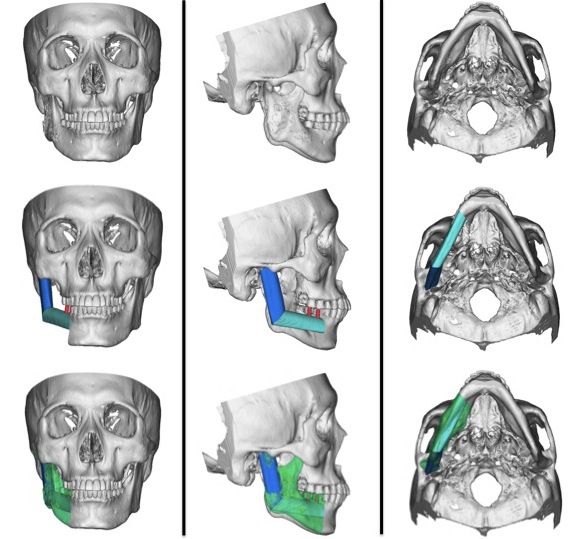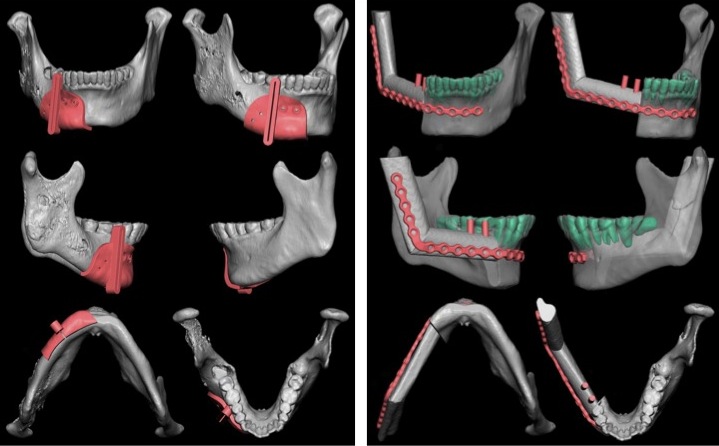|
Back to Annual Meeting
Use of virtual surgery for reconstruction of mandibular condyle defects: An analysis of functional outcomes
Z-Hye Lee, B.A, Tomer Avraham, M.D, David L. Hirsch, D.D.S, M.D., Jamie P. Levine, M.D.
New York University Langone Medical Center, New York, NY, USA.
Introduction
Mandibular defects represent a complex reconstructive challenge. In particular, precise positioning of free fibula graft for temporomandibular joint replacement is essential for restoring the occlusal relationship. Computer-aided design and manufacturing (CAD/CAM) is a useful tool for detailed pre-operative planning and intra-operative monitoring--often facilitating single-stage reconstruction with optimal functional results. The purpose of this study was to analyze clinical and functional outcomes following reconstruction of mandibular condyle defects using virtual three-dimensional planning, and to develop a treatment algorithm incorporating this new technology.
Methods
A retrospective review was performed to identify all patients who underwent mandibular reconstruction with free fibula flap after total condylectomy. Three-dimensional modeling software was used to plan and execute reconstruction for all patients. Patient data were examined for defect types, dental rehabilitation, and other long-term functional outcomes.
Results
Between 2009 and 2013, total of 12 patients underwent reconstruction of mandibular defects involving the condyle. The average age was 38.7 (range 11-77) years. The average follow-up period was 2.6 (range 0.8 to 4.2) years. Indications for total condylectomy included bone infection (n= 3), malignancy (n= 6), congenital deformities (n= 2) and bisphosphonate-related osteonecrosis of the jaw (n=1). The use of CAD/CAM technology allowed for precise planning and free fibula transfer with 100% flap survival (n=12). All patients achieved good function, tolerating regular diet with solid foods. Patient satisfaction with vocalization, as evaluated by a validated instrument was good to excellent in all cases. Implants and dentures were placed in 92% (n=11) of patients with the majority undergoing delayed implantation (n=9) with a mean of 3.6 +/- 1.3 implants.
Conclusion
The use of CAD/CAM technology can aid in accurate and successful mandibular reconstruction with vascularized free fibula flap after total condylectomy. This technology allows for precise pre-operative planning and intra-operative manipulation, contributing to optimal functional outcomes.


Back to Annual Meeting
|








